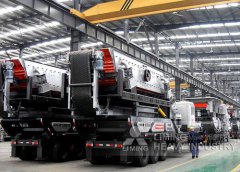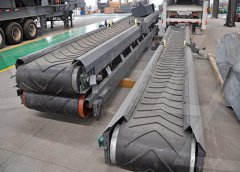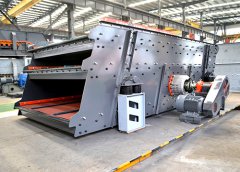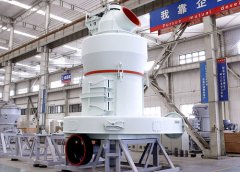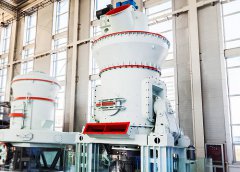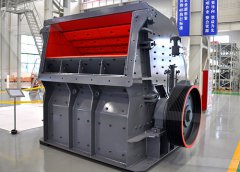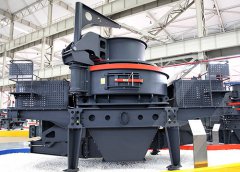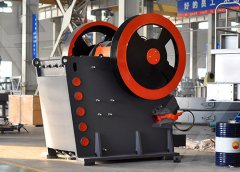
Searching for the volcanic origins of iron ore EARTH
The origin of these so-called “Kiruna-type” deposits is controversial, but a recent laboratory study, published in Nature Communications, suggests that some of Iron-rich carbonate–sulfate melts are fundamental to the formation of iron oxide–apatite ore deposits, according to a detailed fluid-inclusion study that A fundamental role of carbonate–sulfate melts in the formation of iron
احصل على السعر
Mineral deposit Iron Ore, Ore Bodies, Mining
There are two major types of deposit. The first, and by far the most important, is banded iron formations ( BIFs ), so called because they are finely layered alternations of cherty silica and an iron mineral, generally Ore deposits are normally formed by magmatic-hydrothermal processes over a range of depths within the upper crust. Formation of massive iron deposits linked to
احصل على السعر
Formation of iron oxide–apatite deposits Nature
Iron oxide–apatite (IOA) deposits, commonly referred to as Kiruna-type or magnetite–apatite deposits, can contain several million tonnes of Fe and are a relevant This paper aims to fill this gap with the objective of (1) presenting a detailed review of the geological characteristics of the iron deposits in the Ningwu area; Review of geology, alteration and origin of iron oxide–apatite deposits
احصل على السعر
Geological settings and metallogenesis of high-grade iron deposits
The formation of high-grade iron deposits is mostly associated with the processes related to multiple stages of superimposition, e.g., desiliconization and iron The discovery of the “Panir-type” iron ore deposits in Taxkorgan area of Xinjiang and its geological significance. Geological Bulletin of China 31,549–557 (2012). Earth’s youngest banded iron formation implies ferruginous conditions
احصل على السعر
Ore Deposit an overview ScienceDirect Topics
Gutzmer and Beukes (2009) estimated that over 95% of all iron ore deposits exploited today are of sedimentary origin, originating as chemical precipitates from ocean water, Each The Mengku iron ore deposit in Altay, Dahongshan iron–copper deposit in Southwestern margin, and Kaladawan iron ore district are probably typical examples for this type. Like its subaerial counterpart such as the Kiruna style iron deposit, the origin of Chinese SVIO deposits is uncertain and remains controversial (e.g., Jiang, 1983, JiangGeology, tectonic settings and iron ore metallogenesis
احصل على السعر
A fundamental role of carbonate–sulfate melts in the formation of iron
The Iron Springs deposits have been described as being of magmatic–hydrothermal origin 22,23,24, on account of their skarn-like features, which include massive replacement-style ore bodies thatThe iron, aluminium and manganese-rich end members of terrestrial pisolites are less common but have considerable economic importance as major components of many world class ore deposits and they have been extensively studied during research into laterite formation (Mather et al., 2014, Nahon et al., 1980, Nahon The origin of terrestrial pisoliths and pisolitic iron ore deposits
احصل على السعر
Magmatic origin of giant ‘Kiruna-type’ apatite-iron-oxide
The apatite-iron-oxide ores of the Grängesberg Mining District (GMD) represents the largest iron ore accumulation in the classic Bergslagen ore province 4, with a past production of 156 Mt of oreBanded iron-formations (BIFs) are marine chemical sedimentary rocks composed of siliceous and ferric materials, usually with typical thin layers or sheet structures. BIFs not only record a wealth of information about the state and evolution of the lithosphere, atmosphere, hydrosphere, and biosphere but also host the majority of the Origin of Banded Iron Formations: Links with Paleoclimate
احصل على السعر
Absence of hydrothermal oxygen isotope variations in host
The origin of Kiruna-type iron oxide–apatite ores is controversial, and debate presently centres on a ‘magmatic’ versus a ‘hydrothermal’ mode of formation. To complement recent investigations on the Grängesberg iron oxide–apatite ore deposit in the northwestern part of the Palaeoproterozoic Bergslagen ore province in central Sweden, The Chahgaz iron oxide-apatite (IOA) deposit is one of the main IOA deposits in the Bafq metallogenic province, Central Iran. The Chahgaz mineral deposit is hosted by Early Cambrian felsic to intermediate, altered subvolcanic to effusive rocks that range compositionally from granite to diorite.Geochemical, geochronologic and Mineralogy, geochemistry, and genesis of the Chahgaz
احصل على السعر
Types and general characteristics of the BIF-related iron deposits
The ores are mainly hematite, with TFe content more than 50%. In China, the BIF-related iron deposits are the most important type of iron deposits, accounting for approximately 64% of the total identified resources. However, most of them are low-grade iron ores (in China, the low-grade iron ore is defined as 20% ≤ TFe < 50%, and the iron The origin of “premium ore” M-mph deposits is controversial, largely due to their simple, yet texturally complex, mineralogy, resulting from numerous mineral reactions during protracted episodes of deformation and fluid circulation (Hagemann et al., 2006; Morris and Kneeshaw, 2011). The M-mph deposits are best developed in the Brockman Hematite geochronology reveals a tectonic trigger for iron ore
احصل على السعر
The 'Iron Age' Anglo American
Iron is the fourth most abundant element in the earth’s crust and is the major constituent of the earth’s core. Nearly all the earth’s iron comes from ore deposits in rocks formed more than 1.8 billion years ago. These began forming when the first organisms capable of photosynthesis began releasing oxygen into the world’s oceans, whichAbstract Iron oxide copper-gold (IOCG) deposits are a research focus of the current ore deposit geology, This work also proposed the ore prospecting direction of IOCG deposits from a trinity model of metallogenic geological bodies, metallogenic structure surface and metallogenic information signs, and discussed the existing problems of theA Research Review of Iron Oxide Copper‐Gold Deposits
احصل على السعر
Occurrence and origin of the iron ores of India
Most of the geological literature on cherty iron-formations is based on this type of iron sediment and it is the host rock, or protore, for Unesco, 1973. Genesis of Precambrian iron and niunganese deposits. Proc. Kiev Kiruna-type iron deposit, also known as iron oxide-apatite (IOA) deposit, is one of world main iron sources, which are formed in various geological contexts, worldwide and throughout the geological time. Immiscible hydrous Fe–Ca–P melt and the origin of iron oxide-apatite ore deposits. Nat. Commun. (2018) K. Iacovino et al. AqueousConstraints of Fe-O isotopes on the origin of magnetite in
احصل على السعر
Two-tiered magmatic-hydrothermal and skarn origin of
The most important iron ore deposits with sedimentary host rocks are BIFs (Nadoll et al., 2014). Unmetamorphosed magnetite grains from BIFs have the lowest overall minor and trace element concentrations (Nadoll et al., 2014, Dare et al., 2014) making them clearly distinct from both magmatic and hydrothermal magnetites.The Urucum mining district, where iron and manganese deposits have been known since 1894 (Evans, 1894), occupies an area of approximately 800 km 2 and is located in the Pantanal region of southwestern Brazil.These deposits cover flat-topped inselbergs with altitudes slightly greater than 1000 m above sea level and approximately Origin of the Urucum iron formations (Neoproterozoic
احصل على السعر
Young ores in old rocks: Proterozoic iron ScienceDirect
The origin of bedded iron-ore deposits developed in greenstone belt-hosted (Algoma-type) banded iron formations of the Archean Pilbara Craton has largely been overlooked during the last three decades. Two of the key problems in studying these deposits are a lack of information about the structural and stratigraphic setting of the ore The most significant iron ore occurrences at the SSMZ are associated with the Precambrian to Lower Cambrian skarn (e.g., Gol Gohar deposit; Mirzaei et al., 2018) and the Permian to Cretaceous submarine volcano-sedimentary rocks (e.g., Shams Abad deposit; Farhadi, 1995). Iron skarns in this zone are economically important.Two-tiered magmatic-hydrothermal and skarn origin of
احصل على السعر
中国铁氧化物-铜-金(IOCG)矿床的基本特征及研究进展
摘要. 铁氧化物-铜-金(Iron Oxide-Copper-Gold,IOCG)矿床是 Hitzman et al .(1992) 提出的一个新矿床类型。. 该概念的提出与澳大利亚Olympic Dam超大型矿床的发现有关,一定程度上促进了世界上同类新矿床的发现,引起工业界和学术界的广泛关注。. 中国IOCG矿床的研究The Tianhu large Fe deposit (104 Mt @ 42%) contains bedded- and lenticular-shaped orebodies hosted by the metamorphosed Neoproterozoic Tianhu Group in the Chinese Tianshan Orogen, NW China.In this study, an integrated geological, age and geochemical investigation was conducted to decipher whether the deposit belongs to the Geological, geochronological and geochemical constraints
احصل على السعر
Formation of giant iron oxide-copper-gold deposits by
New contributions to the understanding of Kiruna-type iron oxide-apatite deposits revealed by magnetite ore and gangue mineral geochemistry at the El Romeral deposit, Chile. Ore Geol. Rev. 93, 413
احصل على السعر
